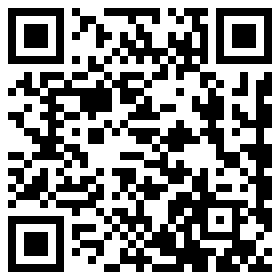So an NFT is simply a piece of information that lives on the blockchain, represented by a visual image. This is not a guide on how to design NFTs. For that you need to learn digital design with tools such as Illustrator and Photoshop.
Btw if you want to create your own NFT collection I wrote a massive guide to show you everything step by step from own experience launching collections here: https://merunas.gumroad.com/l/nft-guide
Remember, an NFT is a regular image + some data stored in the blockchain.
To keep it simple, go to Deep AI text to image generator and type whatever text you want, the AI system will create an image from it like so:

And this is the resulting image which we’ll turn into an NFT:

Now that you have the image that will be used as an NFT, you need a place to store the image so it’s accessible online. Here are the options:
Storing the image on-chain
You can compress and encrypt the image into a string that can be stored in the blockchain directly. Nouns is a very popular project and they do that.
This is the best approach because the data is fully decentralized and will stay in the blockchain permanently so others can access it anytime.
To do that, you’d create an ERC721 smart contract and store the image of the NFT in a string state variable.
However we won’t do that because it’s a bit of a difficult process since you can’t just compress the images you need a specific way to convert them to string so they aren’t massive.
Storing a base64 string would easily take many millions units of gas in Ethereum. It’s just not a simple process.
Storing the image in IPFS
This is the most common approach and the one we’ll take where the image is store in the decentralized service IPFS.
Files on IPFS stay in a network of nodes sharing and storing the image of your NFT. I wrote a lot about how to store your IPFS files online forever here. However today we’ll use a great tool.
That tool is called nft.storage and it’s great because they do all the setup and hard work for you. You just upload and the image stays online forever.
You’ll see a page like this once logged in:

Simply click on the Upload button. Then select the nft image you’ve created and click on upload.
You’ll see the uploaded file.

Click on actions and “Copy IPFS Url”. You’ll need it to create the metadata which is the key information NFT marketplaces need to work with.
Now you’ll need to deploy the NFT contract. Continue reading!
Btw if you want to create your own NFT collection I wrote a massive guide to show you everything step by step from own experience launching collections here: https://merunas.gumroad.com/l/nft-guide
Creating the NFT ERC721 smart contract
The ERC721 standard is the one you must use to deploy your NFT. Go to remix ethereum and click on this icon to create a new smart contract:

Simply call it NFT.sol and add the following code:

That’s the simplest NFT smart contract you’ll ever find. It imports the popular openzeppelin libraries which are the standard when it comes to smart contracts and it adds the minting functionality to create 1 NFT on deployment.
As you can see the parameters are _name, _symbol and _metadataUrl where the name is your NFT name, the symbol for your NFT which is like a short name of 4 characters and the metadata url.
The contractURI() function returns the metadata and it’s required by opensea.
What is metadata? The metadata is the link between your smart contract and your image. It’s a .json file. It contains the name, image and any other attributes you want to add to the NFT so that marketplaces like opensea can show users that data.
Before deploying the NFT contract, you want to create the metadata and upload it to nft.storage. Let’s see how it’s done:
Creating the NFT metadata
Simply create a new file called metadata.json and add the following parameters:

You can change the name and description. The external_url is where you want users to go when they click on your NFT. In this case it’s the same for the image and url so people see the image.
To get the image url go to nft.storage and copy the IPFS url which will look like this:
ipfs://bafkreidhvbks723vbhipmxp4fv75yki7h2v3y3onbbnhisttg6iz3wnacq
However that’s not accessible by browsers. Simply change the ipfs:// part to https://ipfs.io/ipfs/ and it will look like this:
https://ipfs.io/ipfs/bafkreidhvbks723vbhipmxp4fv75yki7h2v3y3onbbnhisttg6iz3wnacq
You can try to open that in your browser and it will show the image.
Now simply upload the metadata.json file you just created to nft.storage like before. Once uploaded, go to Actions > View URL and copy the URL.
Then go back to your remix.ethereum.org NFT.sol smart contract and deploy the contract with the NFT url like so.
That should be it! Your NFT contract will be created, the token will be minted, the metadata deployed to nft.storage will be connected to the smart contract and the image will be received from the metadata to show it on opensea.
If you can’t see the video for any reason here’s a gif of it:

Your NFT is ready and you now know how to create NFTs. This is just for 1 single NFT but you can repeat the process with many NFTs.



All Comments